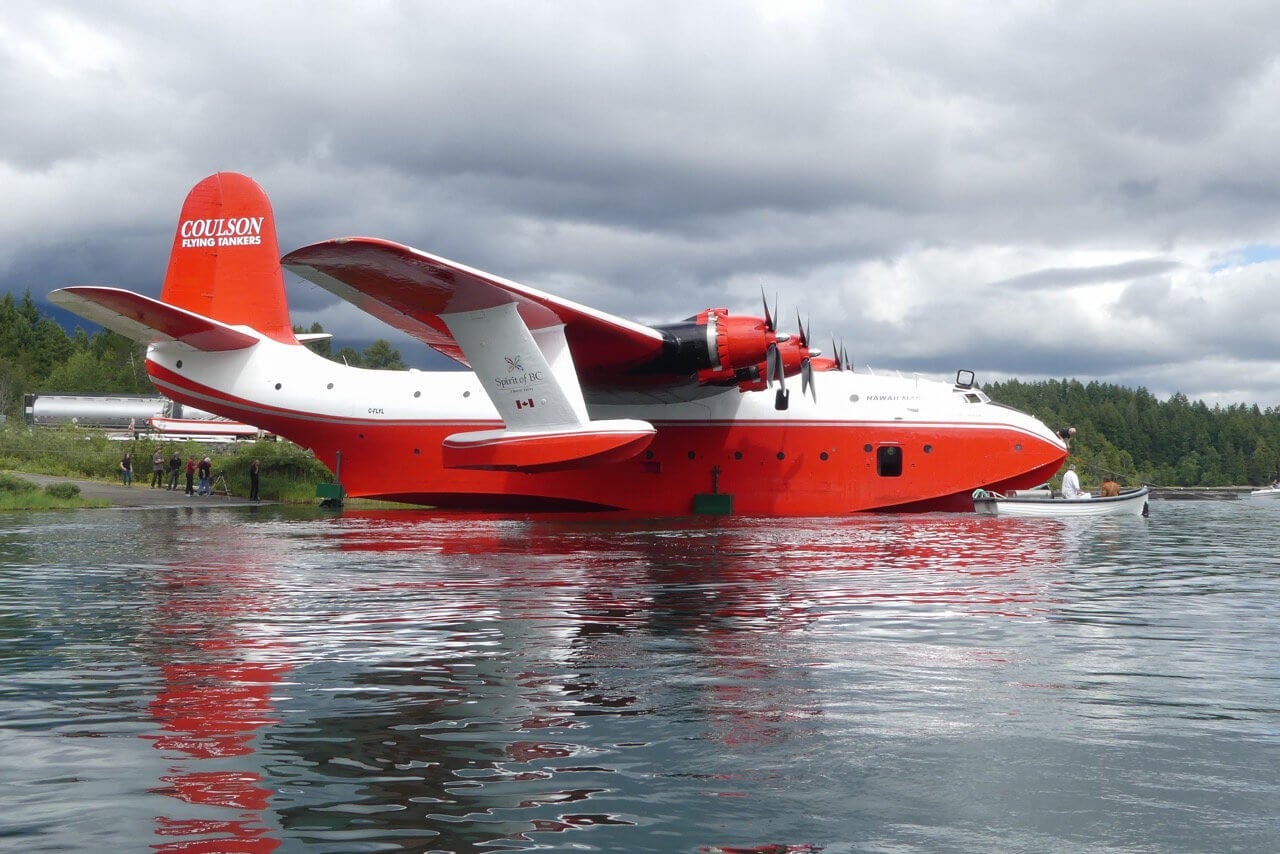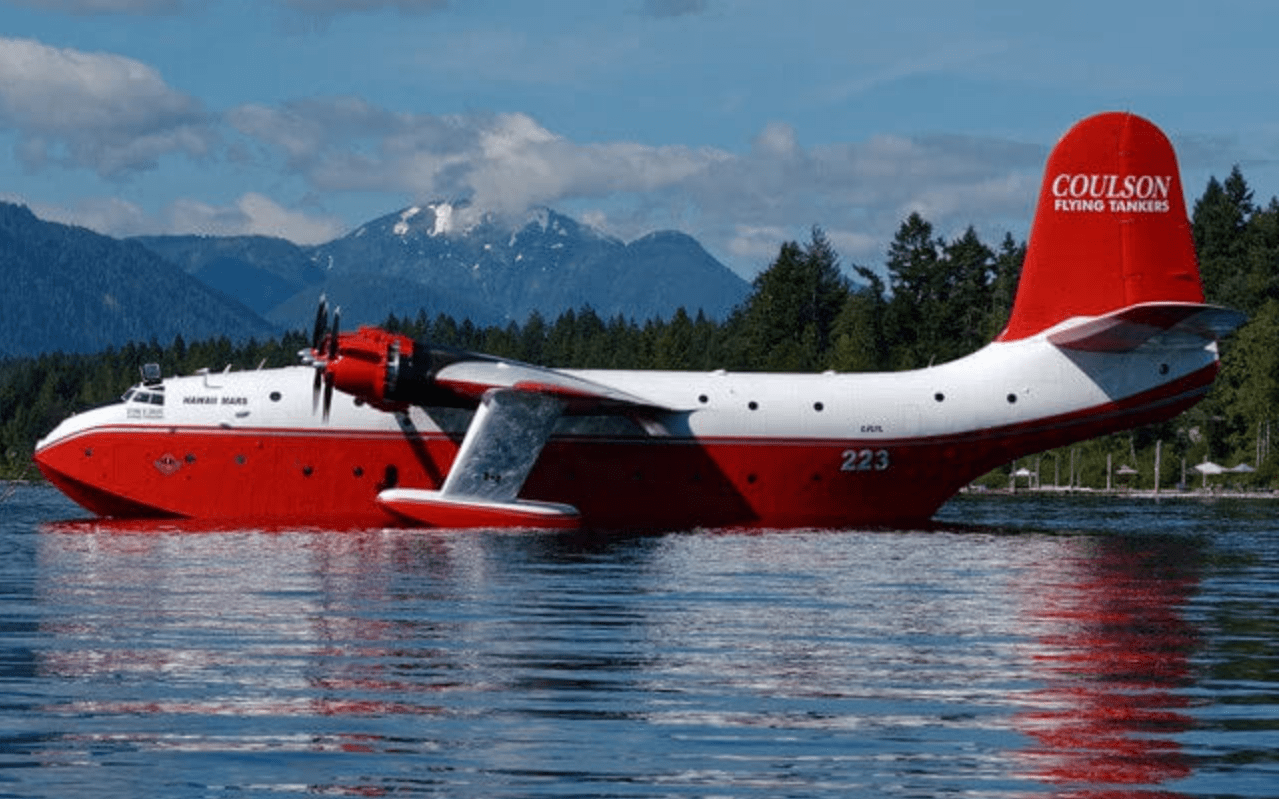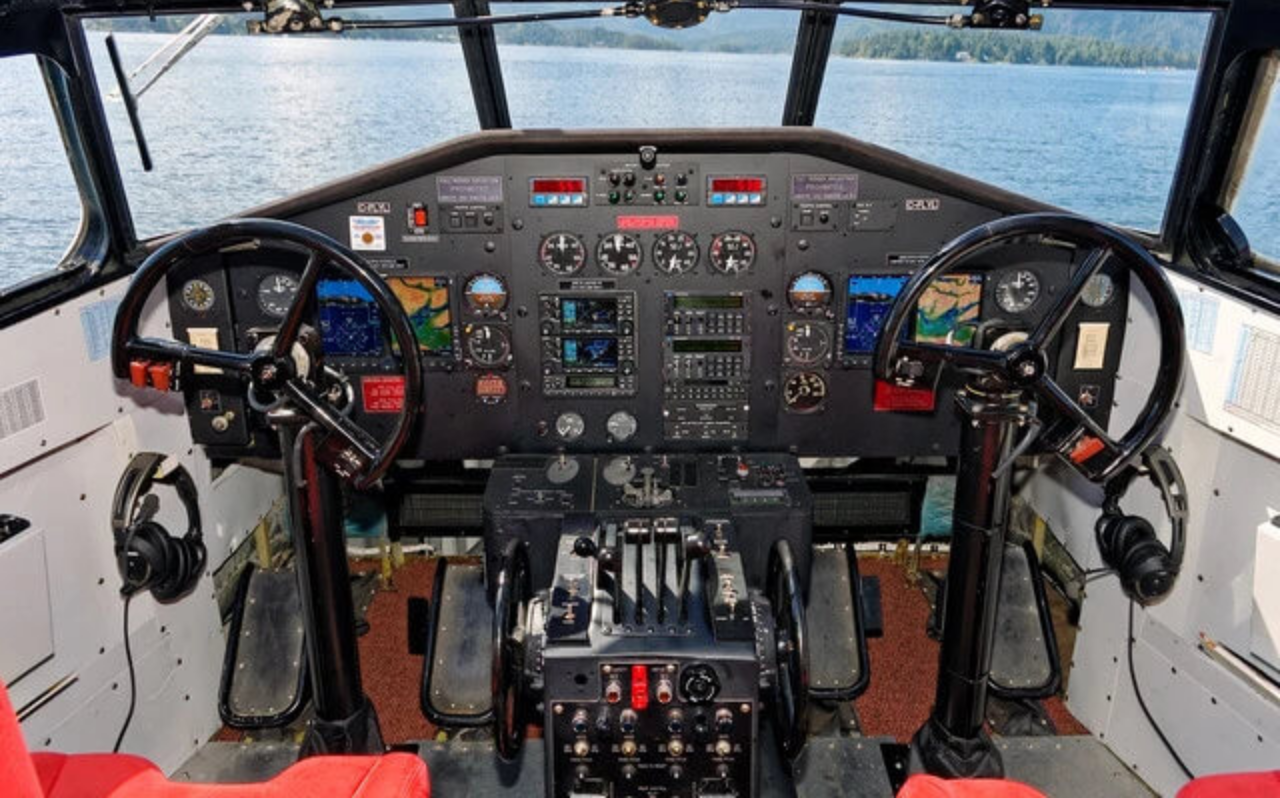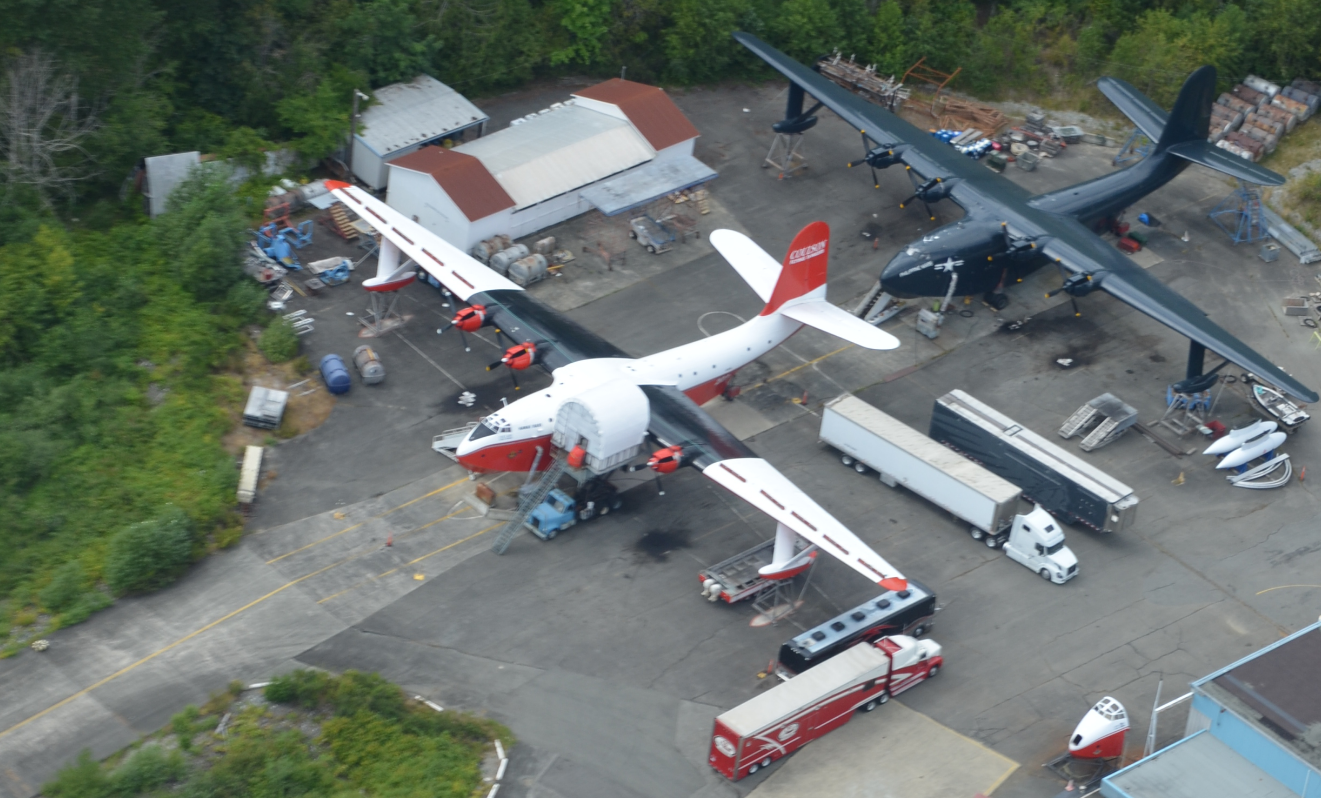Sitting on the picturesque Sproat Lake in British Columbia, Canada is the last operational example of a famous flying boat. And after 77 years of dutiful service, it’s not ready to quit yet. This Martin JRM-3 Mars is the largest flying boat in operation, and it’s been waiting six years for someone to give it a new home.
The stats of this aircraft are absolutely incredible. Its wings spread out 60.96 m, just 3.35 m shorter than a Boeing 747-400’s. That’s still 36.58 m shorter than the king, the massive Hughes H-4 Hercules. Lined up along those wings are four Curtiss Wright R-3350-24WA 18-cylinder radial engines, rated at 2,500 HP each. There have been larger and heavier flying boats, but none of them can say that they’re still airworthy like this 1945 JRM-3 Mars named Hawaii Mars can.
You can own it, too, but it’s going to set you back a whopping $US5 ($7),000,000 ($6,941,000).

The Glenn L. Martin Company was founded in 1912 by the man it was named after. Martin was one of aviation’s pioneers who flew and designed his own aircraft. The man broke early records like in 1912 flying 106 km in 80 minutes over water during a round trip from Newport Bay, California to Catalina Island’s Avalon. In 1913, he set another record by flying to an altitude of 2,743.20 m.
His company had a focus on building warplanes for the United States and its allies. Martin Co. built bombers for the World War I war effort, and in the years after the war, it even built civilian China Clipper flying boats for Pan American World Airways. Martin Co. would later merge with American-Marietta Corporation, which would merge again into Lockheed Martin.

In 1938, the National Museum of the U.S. Navy notes, Glenn Co. developed a long-range patrol flying boat. The XPB2M-1 Mars was a PBM Mariner patrol bomber design but scaled up. The prototype launched on November 8, 1941 and had its first flight in 1942. After tests going into 1943 the Navy liked what it saw, but the role of a patrol bomber was no longer necessary. It was converted into the XPB2M-1R transport and the Navy ordered 20 of them.

The first, Hawaii Mars, was delivered in June 1945, too late to aid in World War II. Thus, the Navy scaled back its order to the five others still on the production line. A total of seven were made, with production concluding in 1947. The original Hawaii Mars was lost early on in its career, crashing in Chesapeake Bay just weeks after its first flight.
This specific flying boat, the second Hawaii Mars, was completed in 1945 and delivered to the Fleet Tactical Support Squadron 2 at Alameda, California in 1946. There, it joined its siblings in carrying cargo. This role didn’t last too long, however, and it was retired in 1956.
In 1959, the flying boat was picked up by Canadian company Forest Industries Flying Tankers. It was given the tail number CF-LYL and converted into a forest firefighting aircraft. Its registration would change to C-FLYL in 1983 and remains unchanged today.
And as you’d expect, a big flying boat means that it can drop a huge load of water. C-FLYL’s carrying capacity is 27,255 l!
It would continue flying as a firefighting water bomber into the present day, getting purchased by the Coulson Group in 2007. Its home base would become Sproat Lake where it is now, and over time the flying boat’s become a bit of a celebrity. I mean, largest operational flying boat is a pretty awesome honour.
And during the plane’s tenure with British Columbia’s Wildfire Service? As CNN Travel notes, one of the flying boat’s pilots had pulled the trigger between 600 and 700 times since 2009. So the plane was definitely doing some hard work.

Unfortunately, the Wildfire Service declined to renew the flying boat’s contract, and as Global News notes, it fought its last fire in 2016. The aircraft made an appearance at 2016’s EAA AirVenture, dazzling crowds with an airshow. Coulson Group had hopes of finding someone willing to buy it for $US3 ($4) million. That didn’t happen. The Canadian public has begged for the aircraft’s return, but the government took a different approach to forest firefighting with smaller aircraft.
That means this beast has been waiting for about six years for someone, anyone, to take it home. The flying boat hasn’t even flown since 2016. It’s been maintained in flying condition and had its last annual inspection in 2016.

Most of the plane’s siblings met a sad fate. All of the others but Philippine Mars were lost to crashes or reached the scrapper. Philippine Mars is intact, but not airworthy.
Coulson owns that one, too, and the goal is to put it in the National Naval Aviation Museum.

So this isn’t just the largest flying boat operating, but the last airworthy of its kind. And it’s not ready to quit. The price is now $US5 ($7) million on Platinum Fighter Sales, and the buyer would get a fresh annual with the purchase. Hopefully, someone rich enough for a vintage bird keeps it alive.
Author’s note: An earlier version of this story’s sub-headline said that this aircraft is the “second largest.” That was an error somehow carried over from an early draft. That has been fixed.
